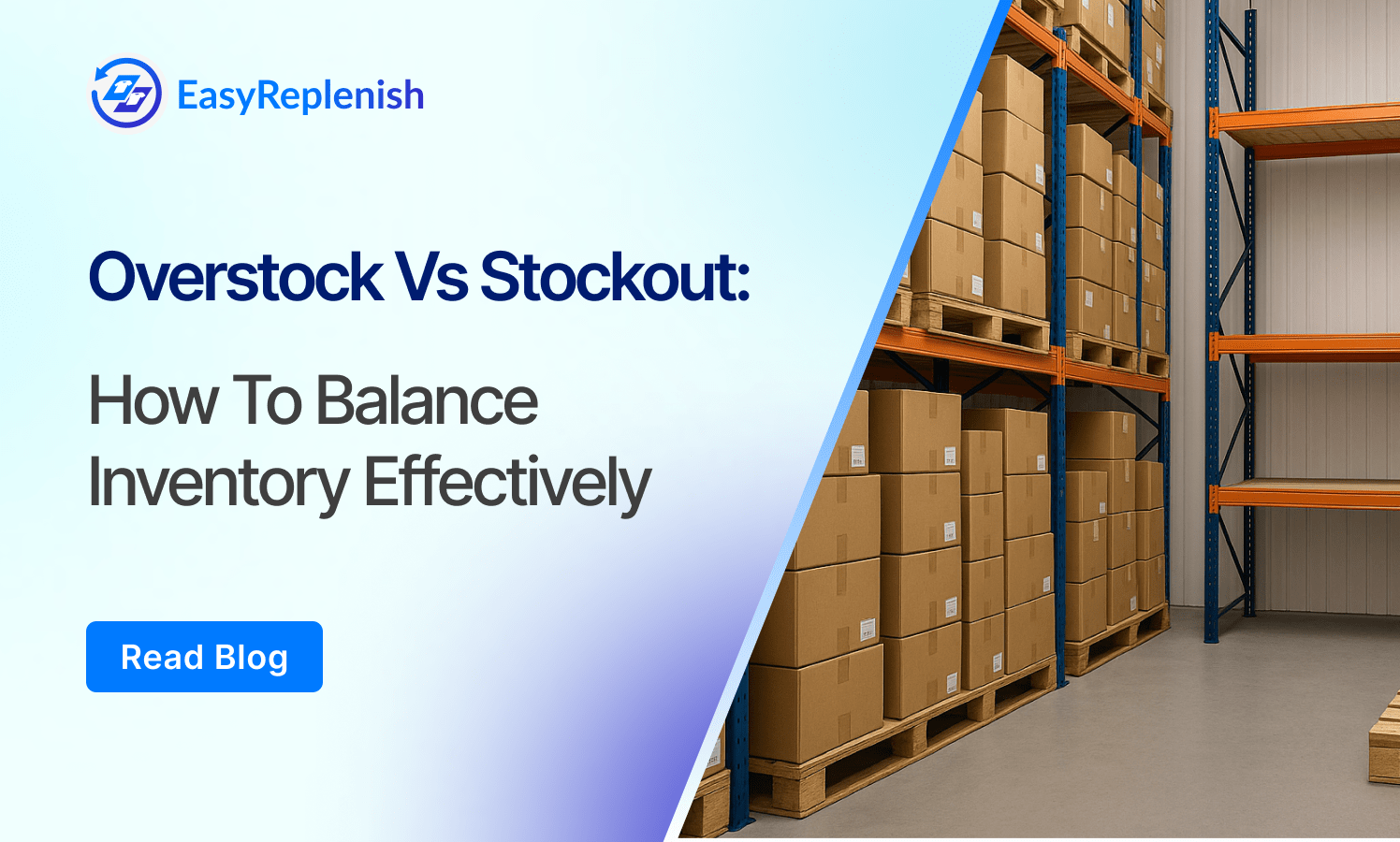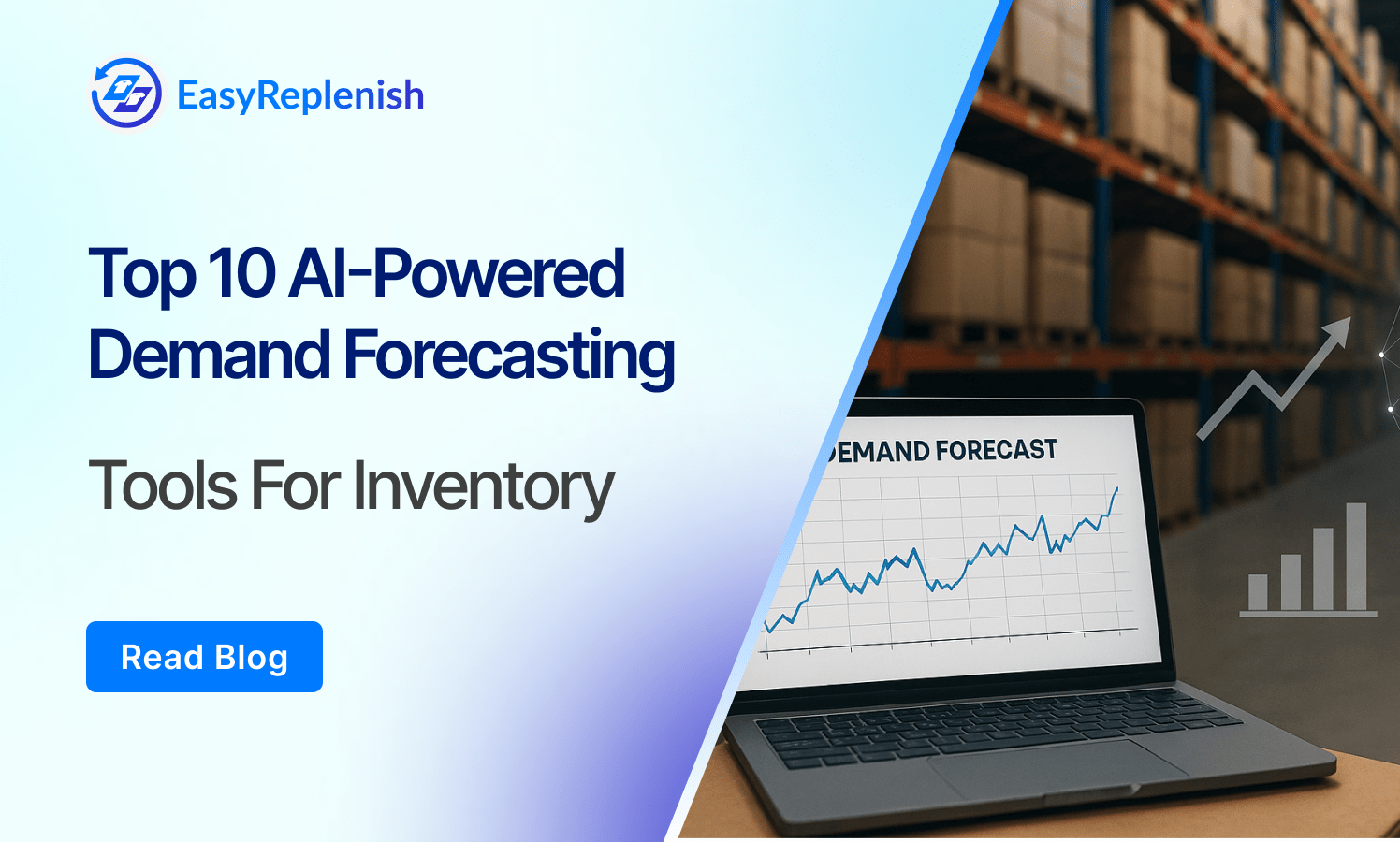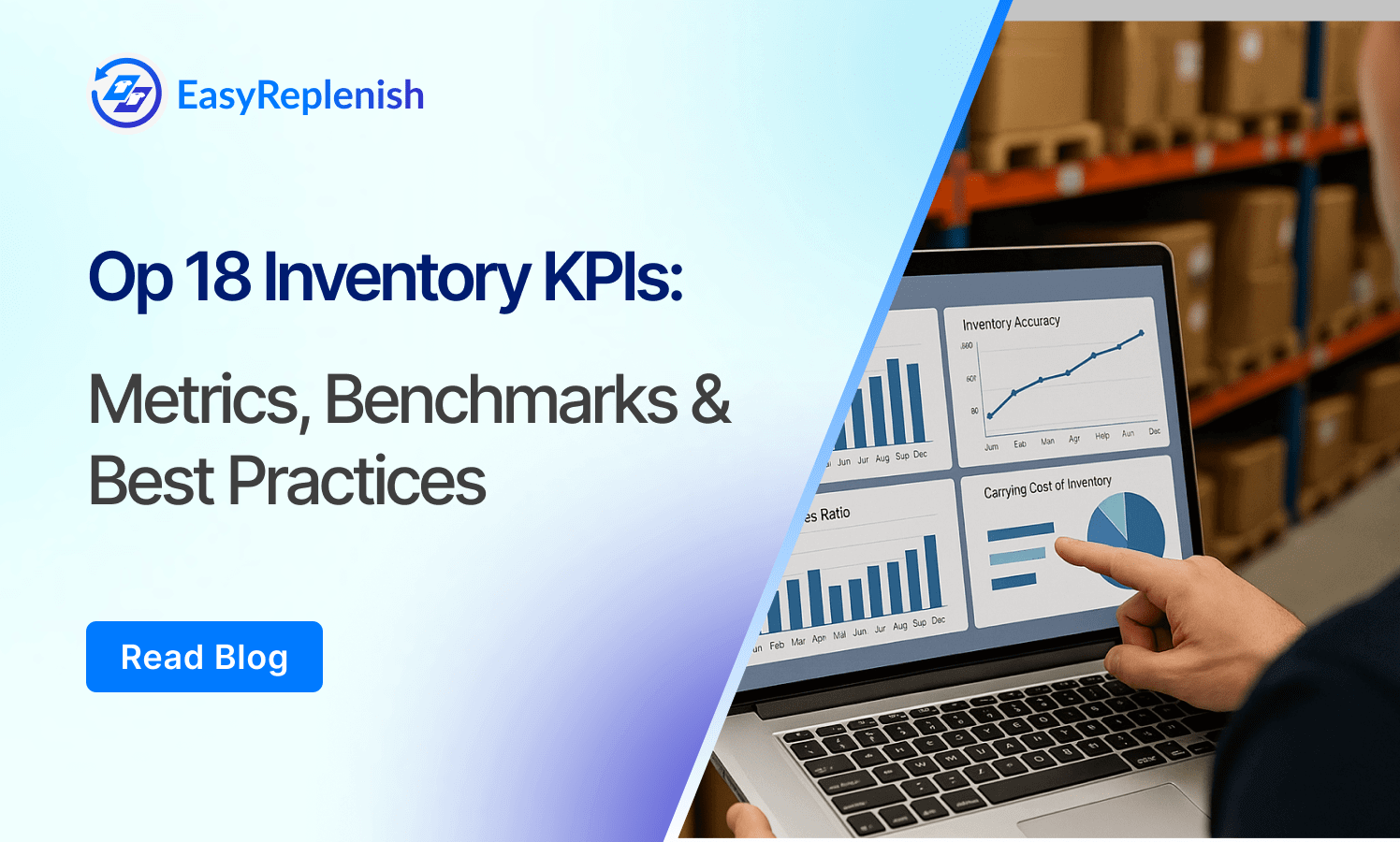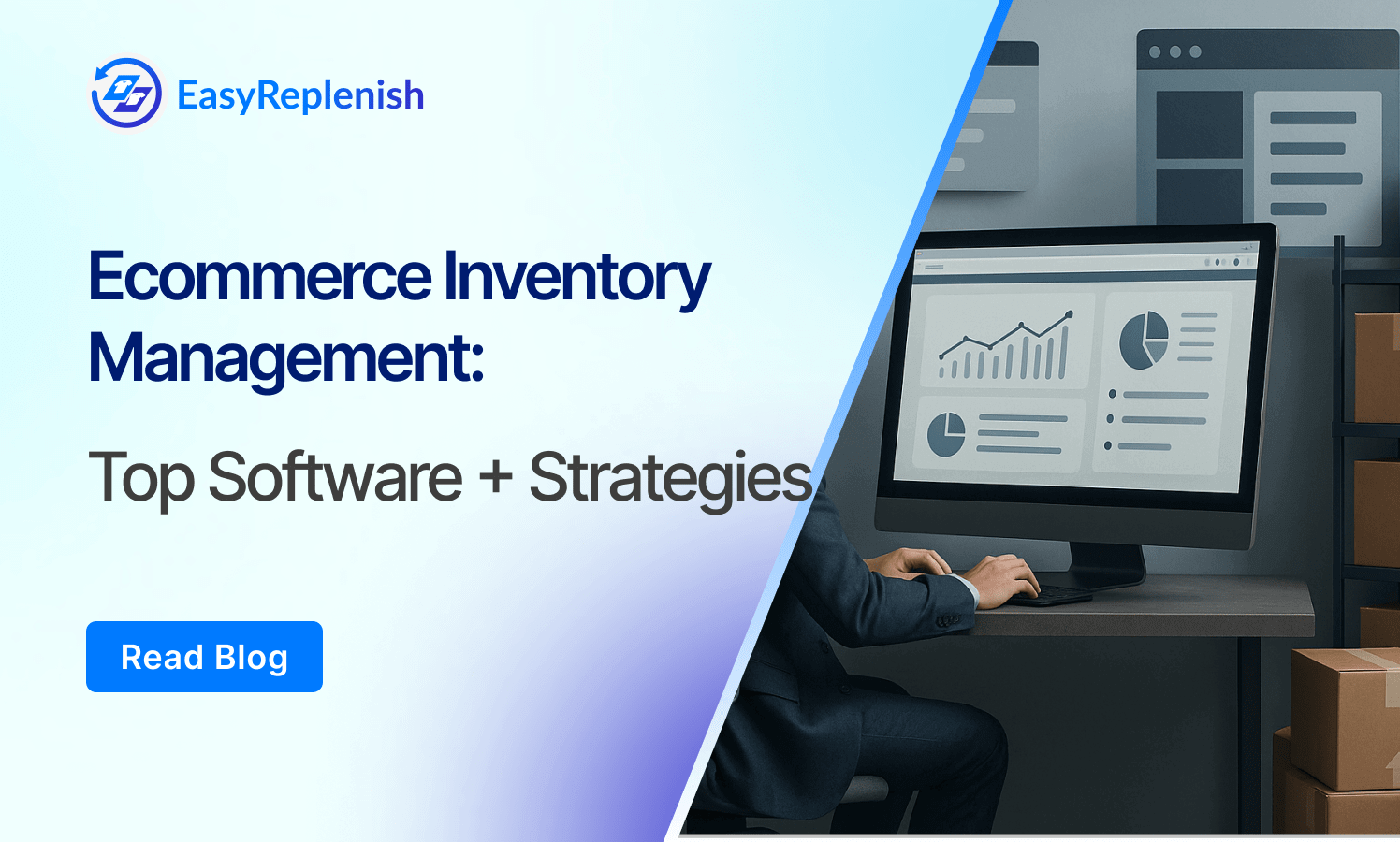Overstock vs Stockout: How to Balance Inventory Effectively

Inventory is both an asset and a liability. Manage it well, and it drives margins, customer satisfaction, and capital efficiency. Mismanage it—and you're left with either unsold stock eating into profits or missed sales that erode customer trust.
The biggest challenge? Striking the right balance between overstock and stockout. In the real world, both scenarios come with steep costs. Overstock ties up capital, increases holding costs, and leads to markdowns. Stockouts, on the other hand, result in missed revenue, lost customers, and downstream operational disruption.
This blog breaks down the true cost of each, why achieving balance is harder than it seems, and how data-driven systems can help businesses—especially in fashion, D2C, and multi-channel retail—avoid extremes and operate within a responsive, optimized inventory framework.
What Is Overstock and Why It Happens
Overstock occurs when the inventory held exceeds actual customer demand within a sellable window. While it might seem safer than understocking, the financial drag of excess inventory can quietly erode margins—especially in categories with high seasonality or style obsolescence.
Common causes of overstock include:
- Inaccurate forecasts: Relying on gut-based planning or outdated models leads to inflated demand assumptions.
- Bulk ordering incentives: MOQ (minimum order quantity) or cost-per-unit considerations often push brands to order more than needed.
- Long lead times: Brands may over-purchase to compensate for supplier delays, creating a lag-buffer that ends up unused.
- Trend misreads: In fast-moving categories like fashion, misjudging consumer interest in a collection or SKU can result in deadstock within weeks.
Overstock doesn’t just take up physical space—it locks working capital, inflates carrying costs, and often leads to markdowns or liquidation. In high-churn categories, it also creates opportunity cost by limiting flexibility for new product introduction.
What Is Stockout and Its Impact on Business
A stockout occurs when a product is unavailable for sale despite active demand—whether on a shelf, in an online catalog, or across a marketplace listing. While occasional stockouts are inevitable, persistent or poorly managed ones have a measurable impact on revenue, customer loyalty, and operational efficiency.
Stockouts typically result from:
- Under-forecasting demand, especially for fast-moving or newly trending products.
- Delayed replenishment caused by supplier lead times, internal approval bottlenecks, or fulfillment lag.
- Inventory misalignment across locations—where stock exists in one warehouse but is inaccessible where demand occurs.
- Inadequate buffer stock or lack of safety stock logic for high-velocity SKUs.
The cost of a stockout isn’t just lost revenue for that day—it can ripple across customer behavior and platform reputation. DTC brands may see higher bounce rates, reduced average order value, and lower repeat purchase rates. For omnichannel retailers, stockouts also trigger penalties on marketplaces, lost buy box visibility, and poor fulfillment scores.
Worse, stockouts drive customers directly to competitors. In industries like fashion, where trend sensitivity is high and purchasing is often emotional, even a one-time stockout can lead to long-term brand churn.
Overstock vs Stockout: Side-by-Side Comparison
While both overstock and stockout are costly, their impact is different—and often compounding. One traps capital, the other loses revenue. Here’s how they compare across critical business dimensions:
1. Overstock
- Working Capital Impact: High—cash is locked in unsold goods sitting in warehouses or retail stores.
- Storage & Handling Costs: Increased warehousing fees, labor costs, and risk of damage or obsolescence.
- Markdowns & Liquidation: More likely to discount inventory to clear space, leading to margin erosion.
- Inventory Turnover: Slower turns reduce operational agility and hide underperforming SKUs.
- Opportunity Cost: Limits ability to launch new collections or styles due to clogged inventory.
- Environmental Waste: Unsold inventory often ends up in landfills or offloaded at deep loss.
2. Stockout
- Lost Sales: Immediate revenue is lost, especially during high-traffic or promotional periods.
- Customer Experience: Poor availability can lead to lower NPS, reduced trust, and lower LTV.
- Channel Penalties: Marketplaces like Amazon or Flipkart penalize stockouts with lower rankings or delisting.
- Fulfillment Failures: Higher risk of backorders, cancellations, and split shipments.
- Competitive Deflection: Buyers move to competitors quickly, especially in fast fashion and consumer goods.
- Reputation Risk: Too many stockouts damage brand image—especially for premium or reliability-focused labels.
Striking the right balance between these two requires more than reactive fixes—it demands predictive accuracy, real-time visibility, and automated replenishment.
Why Striking the Right Balance Is Hard
Finding the sweet spot between overstock and stockout isn’t as simple as adjusting order quantities. It’s a moving target shaped by volatile demand, fragmented supply chains, and the increasing complexity of multi-channel retail. Even with experience and good intent, most brands struggle to consistently operate in balance.
Here’s why:
1. Demand is unpredictable and fragmented
Consumer behavior is influenced by marketing spikes, social trends, influencer mentions, competitive pricing, and seasonality. This makes it difficult to model demand accurately—especially for fast-fashion, electronics, or seasonal SKUs where trends turn in weeks, not quarters.
2. Long and inconsistent lead times
Global supply chains introduce variability in procurement timelines. When suppliers delay by even a few days or weeks, the ripple effects force brands to either overstock early or risk late arrivals and stockouts mid-season.
3. Inventory is siloed across locations
For multi-warehouse and multi-channel businesses, visibility is often fragmented. One DC may have 100 units while another has zero—leading to missed sales even when inventory exists. Without unified inventory views and transfer logic, these imbalances persist.
4. SKU proliferation increases complexity
With expanding assortments, product variants (style, color, size), and personalized bundles, forecasting at the item level becomes increasingly error-prone. A 10% error across 500 SKUs compounds quickly into massive excess or shortage.
5. Inflexible replenishment systems
Many planning systems rely on static reorder points or rigid cycles that can’t respond to real-time demand shifts. Without dynamic replenishment and buffer logic, businesses either reorder too late or too much.
Ultimately, the difficulty lies not in the decision itself—but in the system’s ability to respond quickly, accurately, and at scale. This is where modern tools, AI forecasting, and inventory intelligence can make a measurable difference.
How to Strike the Right Balance Using Data & Systems
Achieving inventory balance isn't about playing safe—it's about building a responsive, data-driven system that continuously aligns supply with actual demand. With the right forecasting models, replenishment logic, and system integrations, businesses can mitigate risk and optimize availability without bloating their inventory.
1. Demand Forecasting Models That Reduce Extremes
Advanced forecasting techniques—like attribute-based models, ML-powered predictions, and channel-specific curves—help anticipate demand more accurately. These models adapt quickly to early signals, making it easier to reduce safety buffers without exposing the business to stockouts.
Forecasting isn’t about getting it perfect; it’s about getting it close enough to adjust fast.
2. Safety Stock and Dynamic Buffer Calculations
Modern systems calculate dynamic safety stock based on service level targets, demand variability, and lead time fluctuations—not static thresholds. This ensures that fast movers have enough buffer to prevent stockouts, while slower SKUs don’t absorb excess working capital.
3. Real-Time Inventory Visibility Across Locations
A unified inventory view across warehouses, stores, and online channels ensures you can detect imbalances early. Real-time availability allows for smarter decisions around stock transfers, re-routing orders, or pausing low-priority channels to prevent fulfillment failures.
4. AI-Powered Replenishment Recommendations
AI-driven replenishment tools assess not just inventory levels, but demand velocity, seasonality, sell-through, and return rates. They generate automated reorder suggestions that factor in trends, lead times, and even incoming shipments—removing guesswork from restocking.
5. Channel-Specific Allocation Logic
Balanced inventory starts with smart allocation. Brands that distribute inventory based on channel sales patterns, fulfillment SLAs, and size-wise sell-through data avoid both overexposure and understocking. For example, pushing all inventory to D2C may create stockouts on high-performing marketplaces.
6. Dynamic Inventory Rebalancing
Rebalancing isn’t reactive anymore—it can be proactive. Tools now predict future risk of overstock or stockout and suggest inter-warehouse transfers, holdbacks, or promotional pushes. For fast-moving categories, dynamic rebalancing prevents margin loss and stockouts mid-season.
Industry Example: Balancing Inventory for a Fashion Brand
Imagine a mid-sized D2C fashion brand launching its Spring/Summer collection across 150 SKUs, including dresses, tops, and co-ord sets. The brand forecasts high demand for neutral-toned maxi dresses based on last year’s performance and influencer trends, and orders aggressively. Meanwhile, it places conservative bets on bright co-ord sets due to limited historical data.
Problem 1: Overstock from Misread Trend
Post-launch, customer interest in the maxi dresses turns out to be lukewarm. The brand ends up with over 1,000 unsold units by Week 6. Discounts are applied to clear the stock, eroding margins by nearly 35%. The overstock also ties up warehouse capacity and delays restocking of other in-demand SKUs.
Problem 2: Stockouts in Underestimated Category
Conversely, the co-ord sets—especially in bold colors—go viral on social media. The inventory sells out within 10 days, with multiple size variants going out of stock on marketplaces. Not only does the brand lose sales, but also drops in listing rankings due to poor fulfillment rates. By the time replenishment arrives, the demand peak has passed.
Solution: Data-Driven Rebalancing
By Week 3, the brand's inventory team activates real-time replenishment tracking. Using a dynamic forecasting system, they flag the co-ord sets as “stockout risk” SKUs and reallocate buffer units held in central warehouses. At the same time, they identify slower-selling maxi dress sizes and begin localized markdowns while reducing upcoming POs.
Over the next 30 days, this realignment helps recover 22% in lost co-ord sales and clears maxi dress inventory with less margin loss than originally projected.
This example highlights that even with solid planning, demand shifts. But brands with responsive systems can pivot fast—mitigating the cost of imbalance and maximizing in-season performance.
How EasyReplenish Helps Maintain Inventory Balance
Striking the right balance between overstock and stockout requires more than basic inventory visibility—it demands intelligent forecasting, real-time stock signals, and proactive replenishment. EasyReplenish is designed to help brands operate in this sweet spot with precision and control.
Here’s how EasyReplenish supports inventory balance:
1. Real-Time Forecast Adjustments
EasyReplenish blends historical sales data, attribute-based logic, and live channel signals to generate demand forecasts that continuously adapt. As soon as demand trends shift—due to campaigns, seasonality, or competitor actions—the system adjusts forecasts to prevent both under- and over-buying.
2. Dynamic Buffer Stock Calculations
Unlike static safety stock models, EasyReplenish calculates buffer quantities based on real-time demand volatility, supplier lead times, and SKU-level sales velocity. This allows businesses to hold just enough inventory to prevent stockouts—without inflating working capital.
3. Overstock Detection & Alerts
The platform monitors sell-through rates, aging inventory, and projected cover days across channels. SKUs at risk of overstock are flagged early, enabling quick decisions—like markdowns, reallocation, or PO delays—before margins are compromised.
4. Stockout Risk Scoring
EasyReplenish automatically identifies SKUs likely to sell out before next replenishment, based on forward demand and supply position. The system prioritizes these items for reorder, reallocation, or transfer from other nodes—helping avoid missed sales and poor channel performance.
5. Channel-Aware Replenishment
Because it segments forecasts and replenishment recommendations by channel, region, and size curve, EasyReplenish ensures stock is allocated where it's needed most. Whether it's your D2C site, a top-performing store, or a high-growth marketplace, the system dynamically balances depth vs. width.
With EasyReplenish, brands don't just react to inventory problems—they stay ahead of them. The result: fewer stockouts, less overstock, and a more capital-efficient inventory operation.
FAQs
Q1. How much overstock is considered acceptable in inventory planning?
There’s no one-size-fits-all threshold, but many brands aim to keep overstock below 10–15% of total on-hand inventory. This benchmark varies by category—high-margin or evergreen products can tolerate higher overstock, while trend-sensitive categories like fashion or electronics require tighter control to avoid markdowns and deadstock. Regular inventory aging reports and sell-through tracking are essential to identify and manage excess early.
Q2. What’s the biggest risk of stockouts in D2C or marketplace businesses?
For D2C brands, stockouts lead to missed sales and damage to customer trust, especially if key SKUs or sizes are unavailable during peak periods. On marketplaces like Amazon, stockouts can also trigger search rank drops, delisting, or performance penalties, making them harder to recover from. Brands risk losing repeat customers and reducing customer lifetime value if popular SKUs frequently run out of stock.
Q3. Can AI or machine learning help reduce both overstock and stockouts?
Yes. AI-powered forecasting and replenishment tools analyze multiple data sources—like sales trends, seasonality, customer behavior, and channel-specific demand patterns—to improve accuracy and responsiveness. These systems dynamically adjust safety stock and trigger reorders in real time, helping businesses avoid over-purchasing while preventing critical stockouts.
Q4. What’s the best way to manage inventory across multiple warehouses or channels?
The key is real-time visibility combined with location-aware inventory logic. Businesses should use systems that unify inventory views across warehouses, stores, and channels, and support smart reallocation or transfer orders. With multi-node visibility and channel-specific forecasting, brands can reduce excess in one location while avoiding shortages in another, enabling better fulfillment and faster response to demand spikes.

.png)





